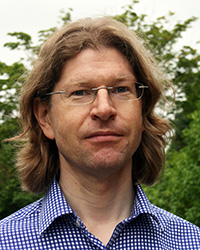



History
Castep Software Reviews
CASTEP was created in the late 1980s and early 1990s in the TCM Group of the Cavendish Laboratory in Cambridge.[1] It was then an academic code written in Fortran77. In the mid 1990s it was commercialised by licensing it to Molecular Simulations International (the company was later purchased by Accelrys, in turn purchased by Biovia) in an arrangement through which the University of Cambridge received a share of the royalties, and much of the development remained with the original academic authors. The code was then redesigned and completely rewritten from 1999–2001 to make use of the features of modern Fortran, enable parallelism throughout the code and improve its software sustainability. By this point annual sales exceeded £1m.[2] Despite its commercialisation, CASTEP and its source code remained free to UK academics.
In 2019 the free academic licence was extended to world-wide academic use (not just UK academia). Commercial users can purchase CASTEP as part of Biovia's Materials Studio package.[3]

CASTEP is a commercial software that comes with Materials Studio software package from Dassault Systems. It can be used to calculate the electronic properties of crystalline solids, surfaces, molecules, liquids and amorphous materials from first principles.
Software that open geom file - CASTEP geometry data Programs supporting the exension geom on the main platforms Windows, Mac, Linux or mobile. Click on the link to get more information about CASTEP for open geom file action. CASTEP (Cambridge Serial Total Energy Package) is a commercial software package which uses density functional theory with a plane wave basis set to calculate the electronic properties of crystalline solids, surfaces, molecules, liquids and amorphous materials from first principles.
Castep Software Free
History
CASTEP was created in the late 1980s and early 1990s in the TCM Group of the Cavendish Laboratory in Cambridge.[1] It was then an academic code written in Fortran77. In the mid 1990s it was commercialised by licensing it to Molecular Simulations International (the company was later purchased by Accelrys, in turn purchased by Biovia) in an arrangement through which the University of Cambridge received a share of the royalties, and much of the development remained with the original academic authors. The code was then redesigned and completely rewritten from 1999–2001 to make use of the features of modern Fortran, enable parallelism throughout the code and improve its software sustainability. By this point annual sales exceeded £1m.[2] Free pagemaker for mac. Despite its commercialisation, CASTEP and its source code remained free to UK academics.
Castep In Material Studio Software
In 2019 the free academic licence was extended to world-wide academic use (not just UK academia). Commercial users can purchase CASTEP as part of Biovia's Materials Studio package.[3]